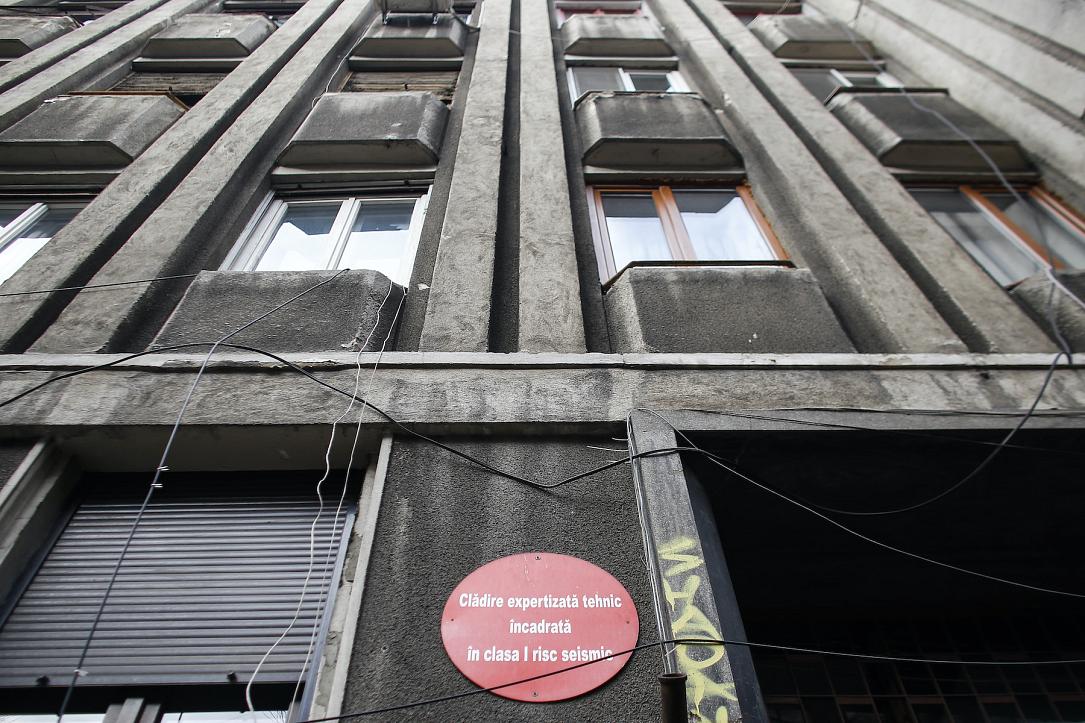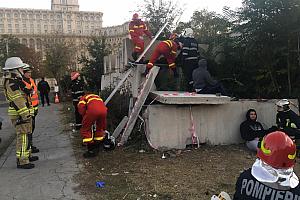Report: 23,000 buildings in Bucharest at risk in case of a major earthquake

Roughly 23,000 buildings in Bucharest could be “significantly damaged” in the event of a major earthquake, according to a risk assessment report compiled by the Bucharest City Committee for Emergency Situations. The same report estimates that around 6,500 people could die and 16,000 would be seriously injured if such an earthquake hit the city.
Taking the 1977 earthquake as an indicator, experts at the Committee for Emergency Situations deem earthquakes to be a major risk factor in Bucharest. That year, a magnitude 7.3 earthquake hit parts of southern Romania, including Bucharest. It left behind 1,578 dead and 7,500 injured. The capital was hit hardest: 90% of deaths and 70% of material losses happened in Bucharest. Thirty-three buildings collapsed, with damages reaching USD 2 billion.
Today, that figure would be much higher. “Taking into account the fact that the [Bucharest] concentrates about 10% of the country's population, more than 15% of its industrial production, a large share of service activities, as well as the main components of state and private structures, it can be said that the risk has increased in recent years,” says the report, cited by G4Media.
The Committee for Emergency Situations has identified roughly 400 buildings that are at least eight floors tall and were constructed between 1925 and 1940 which are especially vulnerable to earthquakes. Around 900 kilometers of steel piping would also be at risk. The centralized heating system, along with the water pipes, would be affected, and so would large hotels and around 35 kilometers of the subway network.
The report ends by imagining a scenario that shows that 50% of the buildings that would be severely damaged by an earthquake are built using materials of poor quality, without being necessarily tall. An additional 40% are medium-sized buildings that were constructed using reinforced concrete. Finally, the remaining 10% consists of tall, concrete buildings.
Out of the 23,000 buildings that would be damaged by an earthquake, around 1,000 could “partially or completely collapse,” according to the Committee for Emergency Situations.
If an earthquake were to happen at night, it would find over 450,000 inhabitants of Bucharest in buildings that were constructed before 1977, the year of the last major earthquake after which new construction regulations were put in place.
This would mean, according to the scenario in the report, that around 95,000 people would find themselves entrapped, without the possibility to leave the building because of damages. Some would be trapped under debris. Over half of them would be in tall buildings alone.
Projections put the number of fatalities at 6,500. An additional 16,000 people would be gravely injured, 10,500 would have to be hospitalized, and thousands more would be slightly injured.
A daytime earthquake would have less of an impact in terms of human casualties.
“Antiseismic District”, a project started in 2019 by the Association for Culture and Normality (ARCEN) together with the Association for the Reduction of Seismic Risk (Re:Rise), aims to equip young people with the right skills to survive during an earthquake.
The project includes preparation sessions with students in some of Bucharest’s schools. The sessions continued throughout the pandemic both in-person and online.
“We built on the information they gave us, but also on the needs that we identified and on the things that we realized that they did not now, neither them nor their families,” said Alberto Groșescu, executive director of ARCEN, quoted by G4Media. He added that knowing what to do during an earthquake can prevent tragedies similar to those brought about by the 1977 earthquake.
Since 1900, Romania has registered 526 earthquakes of over 4 on the Richter scale. Out of those, 467 had a magnitude of between 4 and 5. Around 53 more have been between 5 and 6, two between 6 and 7, and four above 7.
radu@romania-insider.com
(Photo source: Inquam Photos / Octav Ganea)













